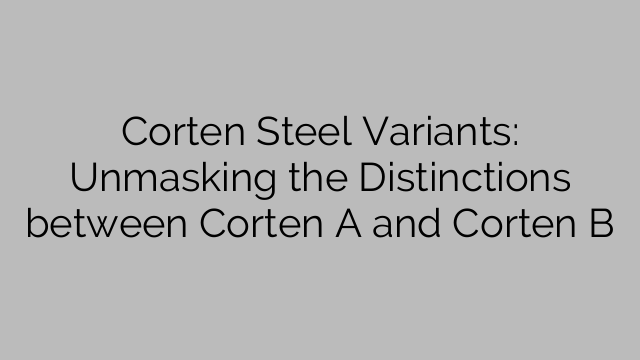Within the Corten steel family, two primary variants stand out: Corten A and Corten B. While both possess similar characteristics and serve the same purpose, there are certain distinctions between the two that are worth exploring. Let’s unmask the differences between Corten A and Corten B.
Corten A is the original weathering steel grade and is widely regarded as the standard variant. It is primarily composed of iron and small amounts of copper, phosphorus, chromium, nickel, and other elements. The presence of copper in Corten A enhances its corrosion resistance by promoting the formation of a protective layer of rust.
Corten B, on the other hand, is a newer variant of weathering steel that was developed to provide even greater resistance to atmospheric corrosion compared to its predecessor. It contains a slightly higher amount of phosphorus, silicon, and chromium, which contribute to its enhanced toughness and resistance to atmospheric corrosion.
One of the main distinctions between Corten A and Corten B is their usage. Corten A is commonly used for architectural structures, such as buildings, bridges, and sculptures. Its unique rusty appearance adds character to these structures, making them stand out in any environment.
On the other hand, Corten B is often preferred for heavy-duty structures, such as industrial buildings, railway wagons, and containers, where a higher level of corrosion resistance is required. Its increased toughness makes it suitable for applications that face more severe environmental conditions or mechanical stresses.
Another aspect that sets Corten A and Corten B apart is their availability and cost. Corten A is readily available and more economical compared to Corten B. This may make it the preferred choice for many designers and architects, especially for smaller projects or those with budget constraints.
However, it’s important to note that both Corten A and Corten B offer excellent resistance to atmospheric corrosion and provide long-lasting durability. Their rusty appearance not only creates a distinct aesthetic appeal but also acts as a protective barrier against further corrosion, eliminating the need for additional coating or painting.
In conclusion, Corten A and Corten B are two variants of weathering steel that share similar characteristics but have subtle differences. While Corten A is considered the standard variant and widely used in architectural structures, Corten B offers enhanced resistance to atmospheric corrosion and is often chosen for heavy-duty applications. Whether you choose Corten A or Corten B, you can be confident in the durability and aesthetic appeal that weathering steel brings to your project.
[reklama_2]

